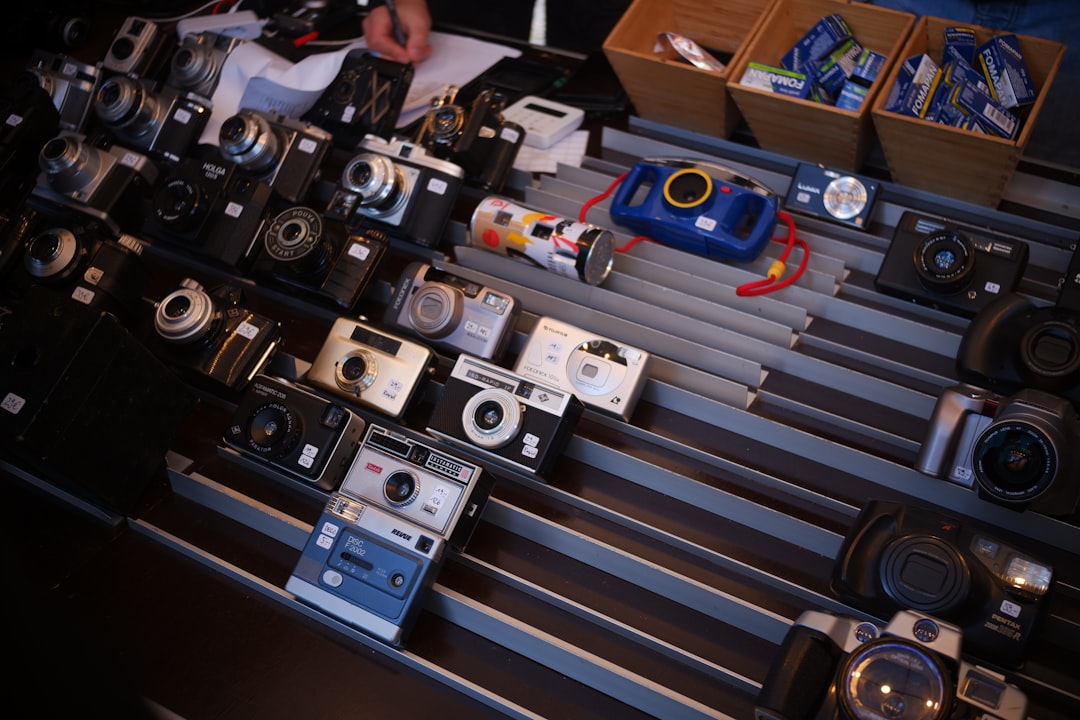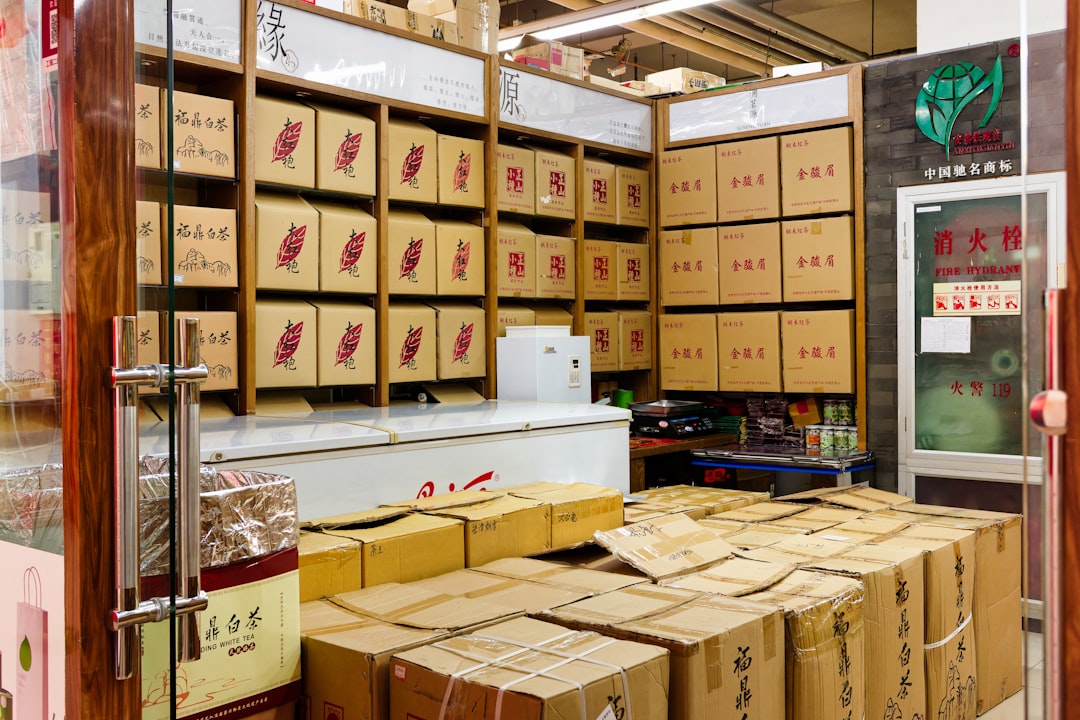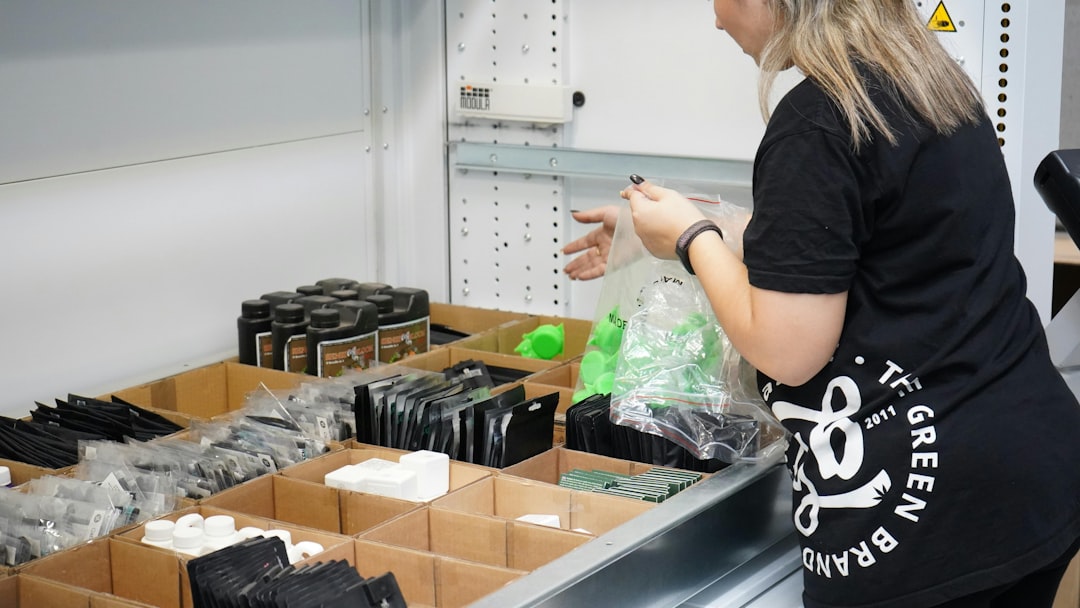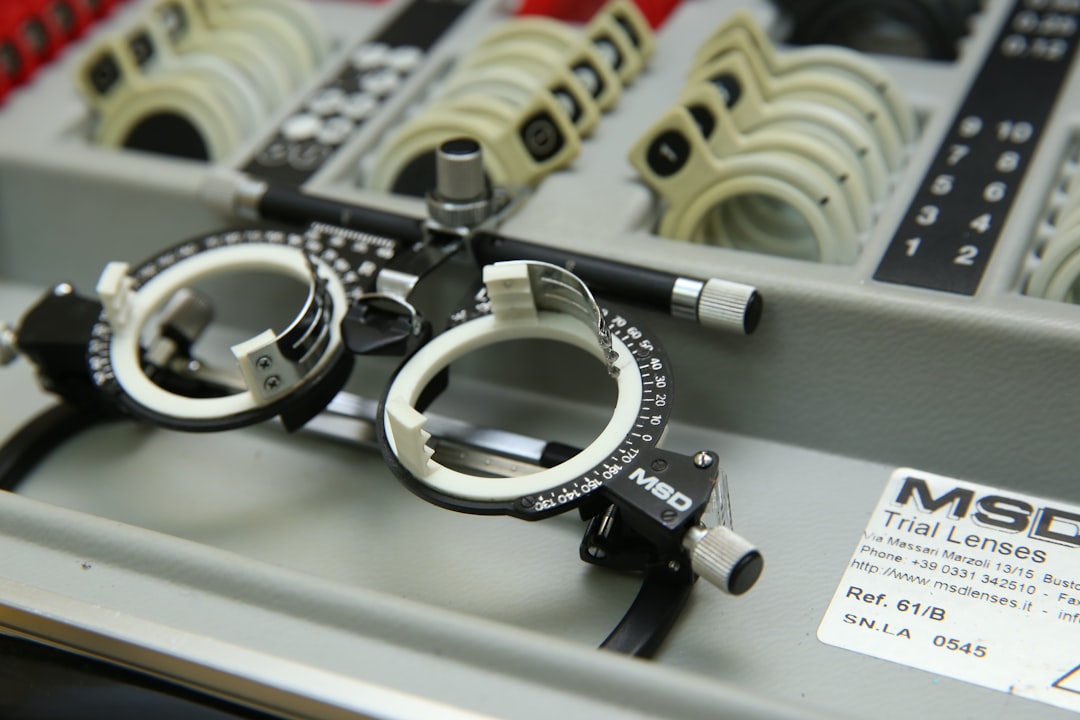

Engage prospects with a scan and streamline customer engagement with FREE QR code marketing tools by Sona – no strings attached!
Create a Free QR CodeFree consultation

No commitment

Engage prospects with a scan and streamline customer engagement with FREE QR code marketing tools by Sona – no strings attached!
Create a Free QR CodeFree consultation

No commitment
In today’s digitally driven landscape, QR codes are transforming how identification equipment suppliers bridge offline assets to real-time digital engagement. However, suppliers often miss high-value opportunities when asset interactions go untracked or when anonymous users browse their marketing collateral undetected. Disconnected systems, inconsistent data, and reliance on manual touchpoints can result in lost prospects, inefficient operations, and lack of visibility into critical transactions. Outdated practices like manual inventory logs, paper-based access lists, and static print materials limit efficiency and leave suppliers blind to actual engagement and intent, increasing the risk of churn and unnoticed upsell opportunities.
QR code technology offers identification equipment suppliers a rapid, customizable, and scalable method to track equipment, enable controlled access, and connect every physical product or environment directly to digital workflows. By moving beyond generic tracking toward account-level insights, suppliers can automatically identify high-fit companies, detect acquisition signals, and close gaps where prospects might otherwise remain unknown or unpursued. This empowers teams to monitor assets, capture customer intent, and automate engagement, improving operational results and marketing ROI.
With QR codes, identification equipment suppliers unlock instant interactions such as QR inventory tracking, secure facility entry, and dynamic marketing campaigns, all while gathering critical data across every customer and asset touchpoint. This technology enables seamless customer experiences, sharper market targeting, and smarter resource allocation, helping suppliers address longstanding pain points and thrive in a competitive market.

Identification equipment suppliers operate in environments where accurate, timely access to asset information translates directly into business performance. Traditional manual processes, from printed maintenance forms to paper sign-in logs, do more than slow down operations. They create data blind spots that cause missed high-value prospects, weak compliance controls, and poor lifecycle insight. QR codes close these physical-to-digital gaps by enabling equipment traceability, instant authentication, and direct customer engagement at scale.
Replacing analog workflows with QR-driven processes removes friction at every stage. Field technicians can scan to verify equipment identity and pull up the latest manuals or service history. Visitors and contractors can scan to request access or confirm credentials. Prospective buyers can scan brochures and packaging to opt in for demos, price sheets, or hands-on how-to content. Each scan becomes an actionable signal that upgrades your CRM accuracy and speeds decision-making across sales, service, and operations.
Modern QR management platforms like Sona QR enable dynamic QR generation, journey-based triggers, and analytics dashboards personalized for asset identification and customer engagement. This makes it simple to keep account data fresh, enforce consistent workflows, and minimize missed opportunities as teams shift from paper and guesswork to scan activity that is verifiable, time-stamped, and tied to business results.

Identification equipment suppliers face persistent hurdles that QR codes uniquely resolve, especially when overlooked engagement or poor asset traceability puts growth or compliance at risk. The reality is that many touchpoints in this industry start offline. A scanner is installed on a factory floor, an ID badge printer ships to a distribution center, or a brochure changes hands at a trade show. Without an easy bridge to digital action and identity, momentum is lost and data goes dark.
QR codes make every physical interaction an opportunity for clarity and conversion. Whether the goal is to verify who is using your equipment, speed up access control, or capture demand for new products, one scan directs the user to the right next step. Unlike static labels that only provide printed text, QR codes can be dynamic destinations you update as content changes over time, which keeps field materials fresh and aligned with current campaigns, certifications, or product specs.
For identification equipment suppliers, these advantages apply directly to common materials such as installation guides, warranty cards, user badges, shipping inserts, and event displays. By embedding QR codes in each of these assets, you convert every touchpoint into measurable progress.

QR codes support a wide range of identification and engagement scenarios that matter to suppliers. Selecting the right format for the right job ensures interactions are smooth and the resulting data is rich enough to power operational decisions. In a typical supplier workflow, you might combine multiple formats across the asset lifecycle to handle both internal processes and customer-facing moments.
It is best to choose formats that match your audience’s context. For service technicians in the field, direct web links to maintenance manuals or an SMS prefill for urgent issues are powerful. For buyers exploring your products at events, vCards for quick contact saving and app download links can accelerate follow-up and adoption. With dynamic QR codes through Sona QR, you can modify destinations as your campaign evolves without reprinting labels or collateral.
Dynamic QR codes provide attribution and allow post-print edits, which is essential for sustained value. Centralized QR management via Sona QR and its use case library streamlines oversight and protects against broken links or outdated content, so a single missed scan does not become a missed opportunity.

Unlocking untapped engagement across the supplier journey depends on precise QR code placement and context-aware targeting. Think about where your users already interact with your brand in the real world. Packaging, assets in the field, and trade show signage are natural scanning surfaces. When you add a clear and specific call to action, you turn passive surfaces into active conversion points.
The key is to place QR codes where a scan aligns with a meaningful next step. Asset labels should link to verification and service logs. Shipments can link to confirmation portals and reorders. Booth signage can capture demo requests. Each placement should also be unique, so you can attribute performance by channel and environment.
When you combine thoughtful placement with dynamic content, you create a network of high-value scan points. The outcome is better segmentation and stronger marketing performance because you can prove which channels produce real interest and which environments drive conversions.

Identification equipment suppliers benefit both operationally and financially by embedding QR codes in core workflows. The result is a more resilient business that can scale service, sales, and compliance without adding manual overhead. You can start small with a single use case and expand as your data processes mature.
Operational teams embrace QR codes because they reduce ambiguity and speed up task completion. Commercial teams value QR codes because they capture intent as it happens, not days later when attention has faded. Together, these benefits improve forecasting accuracy, shorten sales cycles, and increase customer satisfaction.
Modern platforms like Sona QR support these workflows with granular tracking and CRM integrations. That combination keeps opportunity records accurate, automates tasks like follow-up emails or service tickets, and eliminates incomplete leads caused by manual processes.
Each asset scan is a signal that reveals intent, context, and urgency. By deploying multiple QR codes across your touchpoints, you automatically segment your audience and feed that data into targeted campaigns. This approach eliminates guesswork. Instead of assuming which accounts are engaged, you know who scanned what, when, and where, then respond accordingly.
High-value audiences emerge when you tie scans to lifecycle stages, usage patterns, and job roles. Procurement managers scanning reorder forms have different needs than field technicians scanning maintenance logs. With Sona QR, you can tag interactions automatically and sync them to HubSpot, Salesforce, and ad platforms for timely outreach via the Sona retargeting playbook.
With advanced orchestration, you can retarget anonymous but engaged users, reconnect with dormant opportunities, and act on upsell and cross-sell signals powered by real behavior rather than hunches.
QR codes are not just convenient shortcuts. They are connective tissue across your offline and digital campaigns that enable real-time engagement and richer data collection at every touchpoint. For identification equipment suppliers, this means your catalogs, packaging, and trade show displays become measurable channels that feed your CRM with actionable signals.
To make this work, define the role of each QR code in your funnel. Awareness scans on a booth banner should lead to high-level collateral, while consideration scans on a product brochure might deliver a demo video or pricing sheet. Post-purchase scans on packaging and manuals can route to onboarding content and warranty registration. Each code has a job to do, and your tracking should reflect that job with the right Sona attribution models.
Centralized platforms such as Sona QR make it easy to manage all your codes, monitor performance, and sync scan data with your CRM and ad platforms. This transforms static media into dynamic acquisition and retention engines that work in concert with email, paid media, and sales outreach.
QR code campaigns succeed when they are designed with a clear objective, a compelling call to action, and a plan for measurement. The following checklist helps suppliers standardize execution, speed up deployment, and avoid common pitfalls such as untracked scans or broken links.
Before you begin, align your stakeholders around the use case, target audience, and intended outcomes. Identify the systems your scans will connect to, such as your asset management platform, support desk, or CRM. Then use the steps below to move confidently from planning to performance.
Clarify the single most important goal for your campaign. For operations, this might be authentication, secure access, or faster maintenance logging. For marketing, it might be demo signups, spec sheet downloads, or sample requests. A focused use case gives you a clear barometer of success.
Choosing the right code type influences both flexibility and measurement. Static codes can work for simple, unchanging links, but dynamic codes are preferred for most supplier scenarios because they support editing and analytics without reprinting.
How your code looks and where it sits determine whether people scan it. Branded frames, short instructions, and adequate white space all increase scannability. Testing under real conditions prevents data loss.
Start with the surfaces that reach your most valuable audiences and align with your core use case. In the identification equipment market, that often means asset tags, manuals, packaging, trade show signage, and field service vehicles.
Measurement transforms QR codes from a convenience feature into a growth engine. The goal is not just scan volume, but conversion quality and downstream impact.
Tracing every engagement from physical scan to business outcome is critical for proving impact and optimizing spend. Many suppliers struggle with fragmented data and untracked follow-ups that make it difficult to know which assets and campaigns are working. QR codes fix this by attaching reliable data to every offline interaction and tying those interactions to digital outcomes that your teams can act on.
A robust analytics stack captures not just the scan count but also the context. You should know which asset or collateral was scanned, by whom, where, and what happened next. For strategy, see Sona on offline attribution. When you sync this information with your CRM and support tools, you turn raw engagement into meaningful pipeline and retention signals.
With Sona QR and Sona.com, suppliers can centralize scan data, unify fragmented touchpoints across buying stages, and apply multi-touch attribution to show how offline engagement contributes to pipeline and closed revenue.
Scaling QR impact requires consistency, discipline, and continual optimization. Start by embedding unique codes across your most common materials and processes, then use automation to turn scans into actions. Educate your teams on how to encourage scans and why they matter. A simple script at the booth or a short instruction on a label can double your scan rate.
As results come in, invest where performance is strongest. If packaging drives high registration rates, add post-scan onboarding flows. If event scans correlate with high-value opportunities, increase presence at those events and refine your booth messaging. Let data guide deployment and resourcing decisions.
Creative deployments can amplify impact. For example, place codes on fleet vehicles to route passersby to a sample request form. Add QR codes to invoices to streamline reorders and warranty extensions. Each creative touchpoint expands your measurable surface area and reduces friction.
An industrial supplier reduced equipment loss by 15 percent after replacing paper logs with QR-enabled inventory management. Each asset received a unique code tied to its digital record. Field handlers scanned at each transfer, creating a time-stamped chain of custody. Within one quarter, the company recovered several previously untracked devices and used scan analytics to redistribute underutilized assets.
Another supplier replaced physical sign-in sheets at its distribution centers with a QR-based access process. Visitors scanned at entry to complete a mobile form that synced with the access control system. Check-in time dropped by 40 percent, and compliance audits improved because the data trail was complete and searchable. The team also discovered that certain accounts were visiting more frequently than expected, which led to proactive outreach and two expansion deals.
Agricultural equipment providers added QR codes to field machinery for instant on-site support and maintenance logging, even when connectivity was intermittent. Scans cached locally and synced later to the central system. Technicians accessed the latest manuals and logged repairs from their phones. Over six months, first-time fix rates improved and inbound support calls decreased because the right information was available at the moment of need, supporting agricultural marketing.
These examples illustrate a simple pattern. When you make it easy to scan, you gain visibility. When you attach scans to workflows and analytics, you gain control. And when you act on that insight quickly, you accelerate both operational efficiency and revenue growth.
Successful QR programs are equal parts design, placement, and process. The best codes are impossible to miss, easy to scan, and clearly tied to a benefit. The best workflows are automated, integrated, and built to learn from every interaction. Keep these practical tips and pitfalls in mind as you deploy at scale.
Common pitfalls include burying codes in dense layouts, using vague CTAs, linking to generic homepages rather than task-specific pages, and failing to measure beyond the scan. Avoid these by writing benefit-specific CTAs, designing scan-first pages, and connecting scan data to CRM outcomes. Set a cadence to review performance and retire underperforming placements in favor of high-yield surfaces.
QR codes are now a vital force in digital transformation for identification equipment suppliers. They replace manual, error-prone workflows with seamless digital interactions, capturing all asset engagement, surfacing actionable customer intent, and empowering informed, data-driven decisions. Whether clarifying previously invisible leads, reducing churn risk, or ensuring robust asset security, integrated QR workflows provide a strategic, scalable solution. Start creating QR codes for free: https://www.sqr.me/register. With Sona QR, you can generate trackable codes in minutes, orchestrate journeys across channels, and connect scans to revenue through Sona.com’s revenue attribution and buyer journey analytics.
QR codes have transformed the identification equipment suppliers industry from cumbersome manual verification into seamless, efficient access solutions. Whether it’s streamlining client onboarding, enhancing security protocols, or enabling instant access management, QR codes replace outdated processes with quick, mobile-friendly scans that deliver real-time data and improve operational accuracy. Imagine instantly verifying authorized personnel or tracking equipment usage with a simple scan—maximizing both security and customer satisfaction.
With Sona QR, you can create dynamic, trackable QR codes in seconds, update access credentials without reprinting badges, and link every scan to actionable insights that optimize your workflows. No more delays, no more guesswork—just smarter, safer, and more responsive identification systems tailored to your business needs.
Start for free with Sona QR today and transform every scan into secure access, operational efficiency, and measurable success.
QR codes can be attached to each asset to enable real-time status updates, maintenance checks, and chain-of-custody records, allowing suppliers to monitor asset movement, reduce loss, and collect usage data.
Using QR codes replaces manual logs with automated tracking, reduces human error, improves inventory accuracy, decreases lost or unaccounted assets, and provides measurable engagement with product documentation.
QR-coded badges or entry points replace manual check-ins, creating traceable, compliant access with digital audit trails that reduce unauthorized entries and simplify compliance reviews.
Suppliers can place QR codes on brochures, catalogs, event signage, packaging, and rental contracts to capture leads, segment audiences, enable demo requests, and track engagement for targeted follow-up.
QR codes on agricultural machinery enable instant on-site support and maintenance logging, allowing technicians to access manuals and record repairs even offline, improving first-time fixes and reducing support calls.
Use Sona QR's trackable codes to improve customer acquisition and engagement today.
Create Your FREE Trackable QR Code in SecondsJoin results-focused teams combining Sona Platform automation with advanced Google Ads strategies to scale lead generation

Connect your existing CRM

Free Account Enrichment

No setup fees
No commitment required

Free consultation

Get a custom Google Ads roadmap for your business






Launch campaigns that generate qualified leads in 30 days or less.
